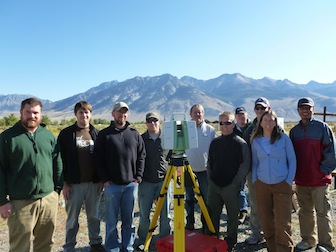Idaho State University and INL awarded $855,000 grant to monitor water resources
November 3, 2011
Idaho State University's Department of Geosciences and the Idaho National Laboratory have received an $855,000 federal grant to develop and process remote-sensing technologies that will help communities monitor water resources and vegetation.
This project is a jump-start to the newly established ISU- INL Collaborative Remote Sensing Program to strengthen research at both institutions, including the INL Geospatial Science and Unmanned Aerial Vehicle programs, according to Nancy Glenn, research professor and director of the Boise Center Aerospace Laboratory.
 The U.S. Department of Energy's Laboratory-Directed Research & Development Program awarded the three-year grant in October. ISU's share is $477,000.
The U.S. Department of Energy's Laboratory-Directed Research & Development Program awarded the three-year grant in October. ISU's share is $477,000.
Glenn—assisted by ISU graduate students and INL scientists—will spend this year gathering field data using INL's newest Terrestrial Laser Scanner, a powerful surveying instrument that captures 3-D images of the Earth's surface using the remote-sensing technology called LiDAR.
LiDAR utilizes laser pulses to determine the distance to an object or surface without coming in physical contact with the object. INL's TLS captures data in full waveform— meaning that multiple targets or layers of information can be detected through vegetation. This is especially important in mountainous terrain with different densities of vegetation where scientists are interested in both the vegetation and the terrain, said Glenn.
"It's the newest sensor on the market and one of the first five in the United States," she said.
Glenn and her research team at INL will use the sensor to monitor vegetation biomass—the amount of vegetation in an area–and develop data processing techniques to apply to water resource management. The monitoring techniques can help scientists determine the structural integrity of dams and levees.
"The partnership with INL provides cutting-edge research opportunities for students and an opportunity for them to work with INL scientists," said Glenn. "It's also good for INL because it provides a potential workforce stream and academic and business opportunities for INL's scientists."
For more information, contact Nancy Glenn, (208) 345-1994.
###
Categories:
